Adaptive Fuzzy Fractional Order Global Sliding Mode Tracking Control Algorithm for Particleboard Glue System
Abstract
:1. Introduction
- 1.
- A novel hyperbolic tangent extended state observer is designed to estimation the system state and total disturbance in real time and compensate it to the controller.
- 2.
- A fractional order global sliding mode controller is designed by introducing fractional calculus, and the chattering phenomenon of the system is weakened by adaptive fuzzy logic control to improve the dynamic performance of the system. Combined with the above designed observer, a compound control strategy is introduced to solve the problems of model uncertainty, complex disturbance and unmeasurable system state in particleboard glue system.
2. Process and System Description
3. Design of the Compound Controller
3.1. Design of Hyperbolic Tangent Extended State Observer
3.2. Design of Fractional Order Global Sliding Mode Controller Based on Adaptive Fuzzy
4. Stability Analysis of Controller
5. Simulation Analysis
- (1)
- The parameters of hyperbolic tangent extended state observer are chosen as , , , , , , , , and initial values of observer are .
- (2)
- The fractional order global sliding mode controller parameters are chosen as , , , , , where .
- (3)
- The membership functions of switching function are defined as , , , and the adaptive parameter are chosen as .
- (4)
- The desired glue flow is , The initial value of the system states are defined as , , , , and the compound disturbance is chosen as .
6. Conclusions
Author Contributions
Funding
Data Availability Statement
Acknowledgments
Conflicts of Interest
References
- Uemura Silva, V.; Nascimento, M.F.; Resende Oliveira, P.; Panzera, T.H.; Rezende, M.O.; Silva, D.A.L.; Borges de Moura Aquino, V.; Rocco Lahr, F.A.; Christoforo, A.L. Circular vs. linear economy of building materials: A case study for particleboards made of recycled wood and biopolymer vs. conventional particleboards. Constr. Build. Mater. 2021, 285, 122906. [Google Scholar] [CrossRef]
- Kariuki, S.W.; Wachira, J.; Kawira, M.; Murithi, G. Crop residues used as lignocellulose materials for particleboards formulation. Heliyon 2020, 6, e05025. [Google Scholar] [CrossRef] [PubMed]
- Saravia-Cortez, A.M.; Herva, M.; García-Diéguez, C.; Roca, E. Assessing environmental sustainability of particleboard production process by ecological footprint. J. Clean. Prod. 2013, 52, 301–308. [Google Scholar] [CrossRef]
- Wang, P.; Zhang, C.; Zhu, L.; Wang, C. The Research of Improved Active Disturbance Rejection Control Algorithm for Particleboard Glue System Based on Neural Network State Observer. Algorithms 2019, 12, 259. [Google Scholar] [CrossRef] [Green Version]
- Wang, P.; Zhu, L.; Zhang, C.; Wang, C.; Xiao, K. Prescribed Performance Control with Sliding-Mode Dynamic Surface for a Glue Pump Motor Based on Extended State Observers. Actuators 2021, 10, 282. [Google Scholar] [CrossRef]
- Hui, T.; Zeng, W.; Yu, T. Core power control of the ADS based on genetic algorithm tuning PID controller. Nucl. Eng. Des. 2020, 370, 110835. [Google Scholar] [CrossRef]
- Miranda-Colorado, R.; Aguilar, L.T. Robust PID control of quadrotors with power reduction analysis. ISA Trans. 2020, 98, 47–62. [Google Scholar] [CrossRef]
- Jakub, B.; Jakub, K. Active Disturbance Rejection Control for Dielectric Electroactive Polymer Actuator. IEEE Access 2021, 9, 95218–95227. [Google Scholar] [CrossRef]
- Chen, Y.; Zhu, P.; Zhang, P.; Li, M.; Zhang, W. Hybrid Sliding Mode Position Tracking Control for Servo System with External Disturbance. IEEE J. Emerg. Sel. Top. Power Electron. 2021, 9, 5478–5488. [Google Scholar] [CrossRef]
- Guo, J. Application of a novel adaptive sliding mode control method to the load frequency control. Eur. J. Control. 2021, 57, 172–178. [Google Scholar] [CrossRef]
- Zhang, H.; Wang, T. Finite-Time Sliding Mode Control for Uncertain Neutral Systems With Time Delays. IEEE Access 2021, 9, 140446–140455. [Google Scholar] [CrossRef]
- Chang, W.; Li, Y.; Tong, S. Adaptive Fuzzy Backstepping Tracking Control for Flexible Robotic Manipulator. IEEE/CAA J. Autom. Sin. 2021, 8, 1923–1930. [Google Scholar] [CrossRef] [Green Version]
- Li, Z.; Wang, F.; Ke, D.; Li, J.; Zhang, W. Robust Continuous Model Predictive Speed and Current Control for PMSM With Adaptive Integral Sliding-Mode Approach. IEEE Trans. Power Electron. 2021, 36, 14398–14408. [Google Scholar] [CrossRef]
- Liu, W.; Zhao, T. An active disturbance rejection control for hysteresis compensation based on Neural Networks adaptive control. ISA Trans. 2021, 109, 81–88. [Google Scholar] [CrossRef]
- Lin, F.; Chen, C.; Xiao, G.; Chen, P. Voltage Stabilization Control for Microgrid With Asymmetric Membership Function-Based Wavelet Petri Fuzzy Neural Network. IEEE Trans. Smart Grid 2021, 12, 3731–3741. [Google Scholar] [CrossRef]
- Omid, M.; Saleh, M.; Afef, F. Adaptive Integral-Type Terminal Sliding Mode Control for Unmanned Aerial Vehicle Under Model Uncertainties and External Disturbances. IEEE Access 2021, 9, 53255–53265. [Google Scholar] [CrossRef]
- Hu, C.; Wu, D.; Liao, Y.; Hu, X. Sliding mode control unified with the uncertainty and disturbance estimator for dynamically positioned vessels subjected to uncertainties and unknown disturbances. Appl. Ocean. Res. 2021, 109, 102564. [Google Scholar] [CrossRef]
- Xiao, X.; Lv, J.; Chang, Y.; Chen, J.; He, H. Adaptive Sliding Mode Control Integrating with RBFNN for Proton Exchange Membrane Fuel Cell Power Conditioning. Appl. Sci. 2022, 12, 3132. [Google Scholar] [CrossRef]
- Nguyen, M.H.; Dao, H.V.; Ahn, K.K. Adaptive Robust Position Control of Electro-Hydraulic Servo Systems with Large Uncertainties and Disturbances. Appl. Sci. 2022, 12, 794. [Google Scholar] [CrossRef]
- Mourad, A.; Youcef, Z. Adaptive Sliding Mode Control Improved by Fuzzy-PI Controller: Applied to Magnetic Levitation System. Eng. Proc. 2022, 14, 14. [Google Scholar] [CrossRef]
- Chang, E.-C.; Cheng, H.-L.; Chang, C.-H.; Wu, R.-C.; Cheng, C.-A.; Xiao, Z.-K.; Lu, W.-J.; Wei, Z.-Y. Robust Optimal Control Design for Performance Enhancement of PWM Voltage Source Inverter. Micromachines 2022, 13, 435. [Google Scholar] [CrossRef] [PubMed]
- Firouzi, B.; Alattas, K.A.; Bakouri, M.; Alanazi, A.K.; Mohammadzadeh, A.; Mobayen, S.; Fekih, A. A Type-2 Fuzzy Controller for Floating Tension-Leg Platforms in Wind Turbines. Energies 2022, 15, 1705. [Google Scholar] [CrossRef]
- Pan, Q.; Li, X.; Fei, J. Adaptive Fuzzy Neural Network Harmonic Control with a Super-Twisting Sliding Mode Approach. Mathematics 2022, 10, 1063. [Google Scholar] [CrossRef]
- Huang, J.-T.; Chiu, C.-K. Adaptive Fuzzy Sliding Mode Control of Omnidirectional Mobile Robots with Prescribed Performance. Processes 2021, 9, 2211. [Google Scholar] [CrossRef]
- Ding, Y.; Wang, X.; Bai, Y.; Cui, N. Global smooth sliding mode controller for flexible air-breathing hypersonic vehicle with actuator faults. Aerosp. Sci. Technol. 2019, 92, 563–578. [Google Scholar] [CrossRef]
- Boukattaya, M.; Gassara, H.; Damak, T. A global time-varying sliding-mode control for the tracking problem of uncertain dynamical systems. ISA Trans. 2020, 97, 155–170. [Google Scholar] [CrossRef]
- Wang, H.; Wu, S.; Wang, Q. Global Sliding Mode Control for Nonlinear Vehicle Antilock Braking System. IEEE Access 2021, 9, 40349–40359. [Google Scholar] [CrossRef]
- Wang, T.; Tan, N.; Qiu, J.; Yu, Y.; Zhang, X.; Zhai, Y.; Labati, R.; Piuri, V.; Scotti, F. Global-Equivalent Sliding Mode Control Method for Bridge Crane. IEEE Access 2021, 9, 160372–160382. [Google Scholar] [CrossRef]
- Yang, Z.; Ding, Q.; Sun, X.; Zhu, H.; Lu, C. Fractional-order sliding mode control for a bearingless induction motor based on improved load torque observer. J. Frankl. Inst. 2021, 358, 3701–3725. [Google Scholar] [CrossRef]
- Silaa, M.Y.; Barambones, O.; Derbeli, M.; Napole, C.; Bencherif, A. Fractional Order PID Design for a Proton Exchange Membrane Fuel Cell System Using an Extended Grey Wolf Optimizer. Processes 2022, 10, 450. [Google Scholar] [CrossRef]
- Sami, I.; Ullah, S.; Ali, Z.; Ullah, N.; Ro, J.-S. A Super Twisting Fractional Order Terminal Sliding Mode Control for DFIG-Based Wind Energy Conversion System. Energies 2020, 13, 2158. [Google Scholar] [CrossRef]
- Sami, I.; Ullah, S.; Ullah, N.; Ro, J.-S. Sensorless fractional order composite sliding mode control design for wind generation system. ISA Trans. 2021, 111, 275–289. [Google Scholar] [CrossRef]
- Xiong, L.; Li, P.; Ma, M.; Wang, Z.; Wang, J. Output power quality enhancement of PMSG with fractional order sliding mode control. Int. J. Electr. Power Energy Syst. 2020, 115, 105402. [Google Scholar] [CrossRef]
- Cuong, H.M.; Dong, H.Q.; Trieu, P.V.; Tuan, L.A. Adaptive fractional-order terminal sliding mode control of rubber-tired gantry cranes with uncertainties and unknown disturbances. Mech. Syst. Signal Process. 2021, 154, 107601. [Google Scholar] [CrossRef]
- Zhu, P.; Chen, Y.; Li, M.; Zhang, P.; Wan, Z. Fractional-order sliding mode position tracking control for servo system with disturbance. ISA Trans. 2020, 105, 269–277. [Google Scholar] [CrossRef]
- Wu, X.; Huang, Y. Adaptive fractional-order non-singular terminal sliding mode control based on fuzzy wavelet neural networks for omnidirectional mobile robot manipulator. ISA Trans. 2021, 121, 258–267. [Google Scholar] [CrossRef]
- Zhuang, H.; Sun, Q.; Chen, Z.; Jiang, Y. Back-stepping sliding mode control for pressure regulation of oxygen mask based on an extended state observer. Automatica 2020, 119, 109106. [Google Scholar] [CrossRef]
- Zhao, L.; Liu, X.; Wang, T. Trajectory tracking control for double-joint manipulator systems driven by pneumatic artificial muscles based on a nonlinear extended state observer. Mech. Syst. Signal Process. 2019, 122, 307–320. [Google Scholar] [CrossRef]
- Zhao, Z.-L.; Guo, B.-Z. A nonlinear extended state observer based on fractional power functions. Automatica 2017, 81, 286–296. [Google Scholar] [CrossRef]
- Chen, J.; Sun, L.; Sun, G.; Li, Y.; Zhu, B. Generalized predictive tracking control of spacecraft attitude based on hyperbolic tangent extended state observer. Adv. Space Res. 2020, 66, 335–344. [Google Scholar] [CrossRef]
- Guo, J.; Cao, J.; Fu, Y.; Ma, Z.; Li, B.; Liu, D. Flow tracking of glue system based on non-singular terminal sliding mode active disturbance rejection control. ICIC Int. 2020, 16, 1757–1768. [Google Scholar]
- Bahtiyar, B. Real-time analysis of adaptive fuzzy predictive controller for chaotification under varying payload and noise conditions. Neural Comput. Appl. 2021, 33, 13449–13465. [Google Scholar] [CrossRef]
- Mao, W.-L.; Chiu, Y.-Y.; Lin, B.-H.; Sun, W.-C.; Tang, J.-F. Direct Fuzzy CMAC Sliding Mode Trajectory Tracking for Biaxial Position System. Energies 2021, 14, 7802. [Google Scholar] [CrossRef]
- Liu, D.; Cao, J. Cascade control of particleboard supplying glue based on Smith predictor. J. Comput. Inf. Syst. 2008, 4, 2033–2038. [Google Scholar]


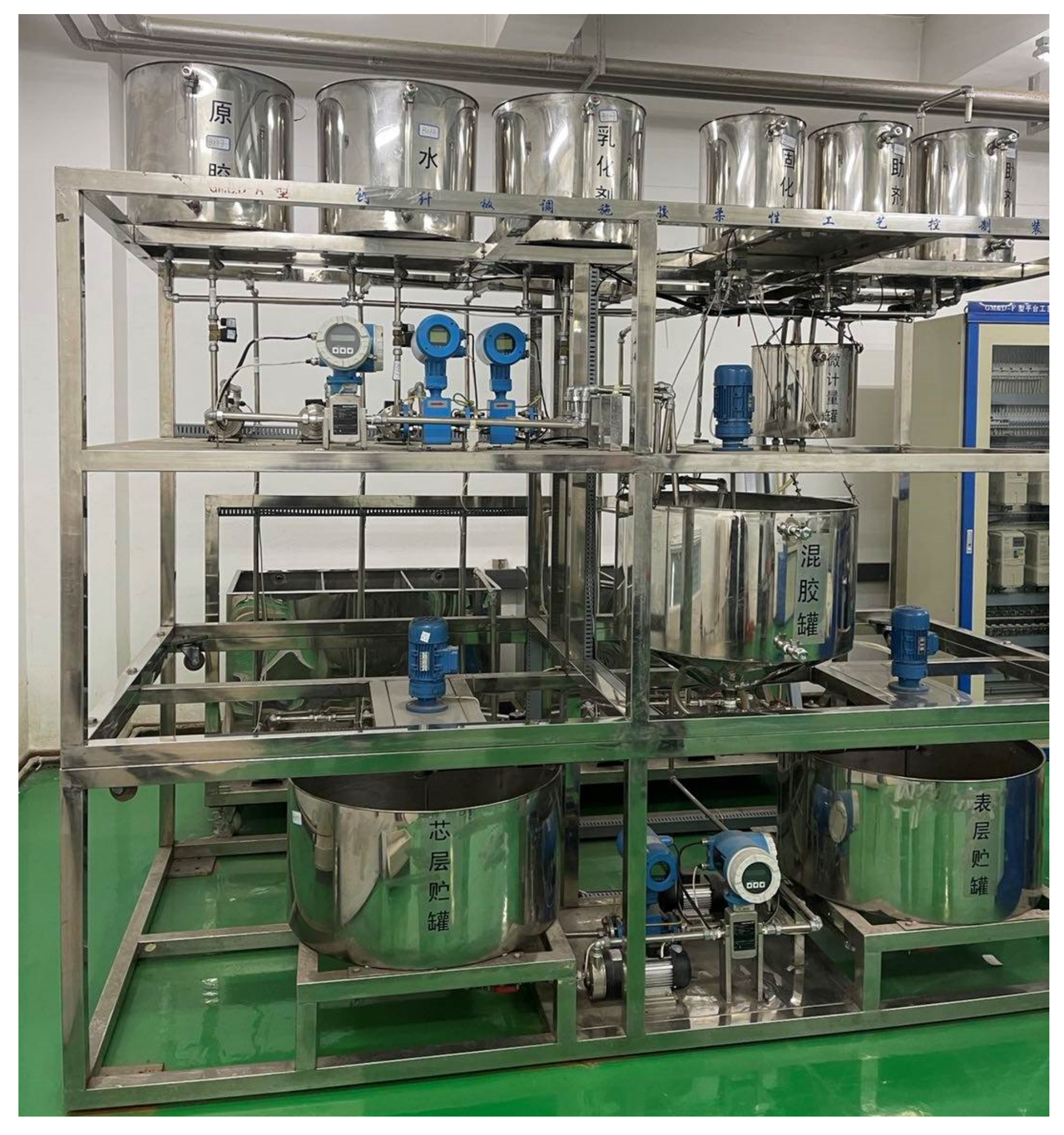
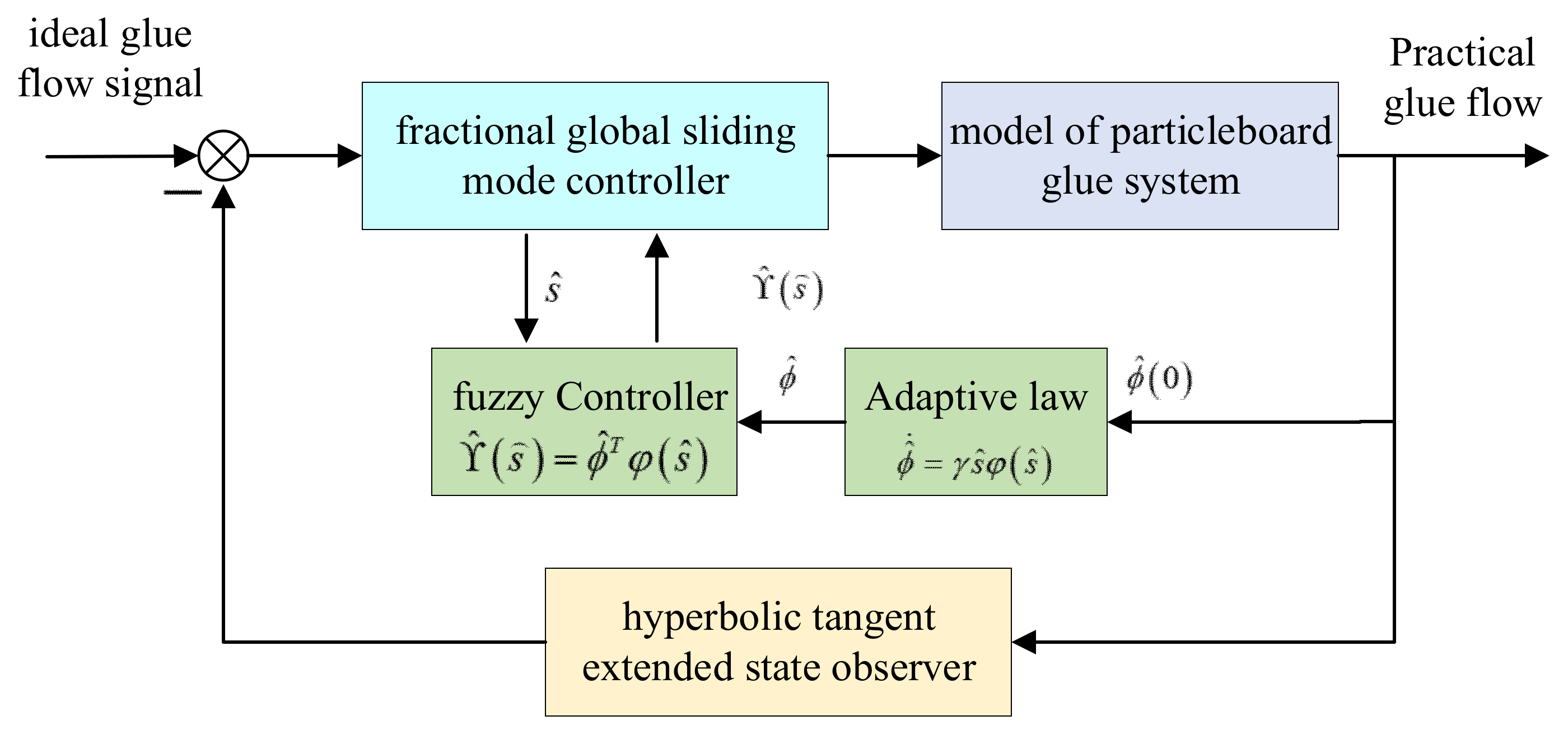



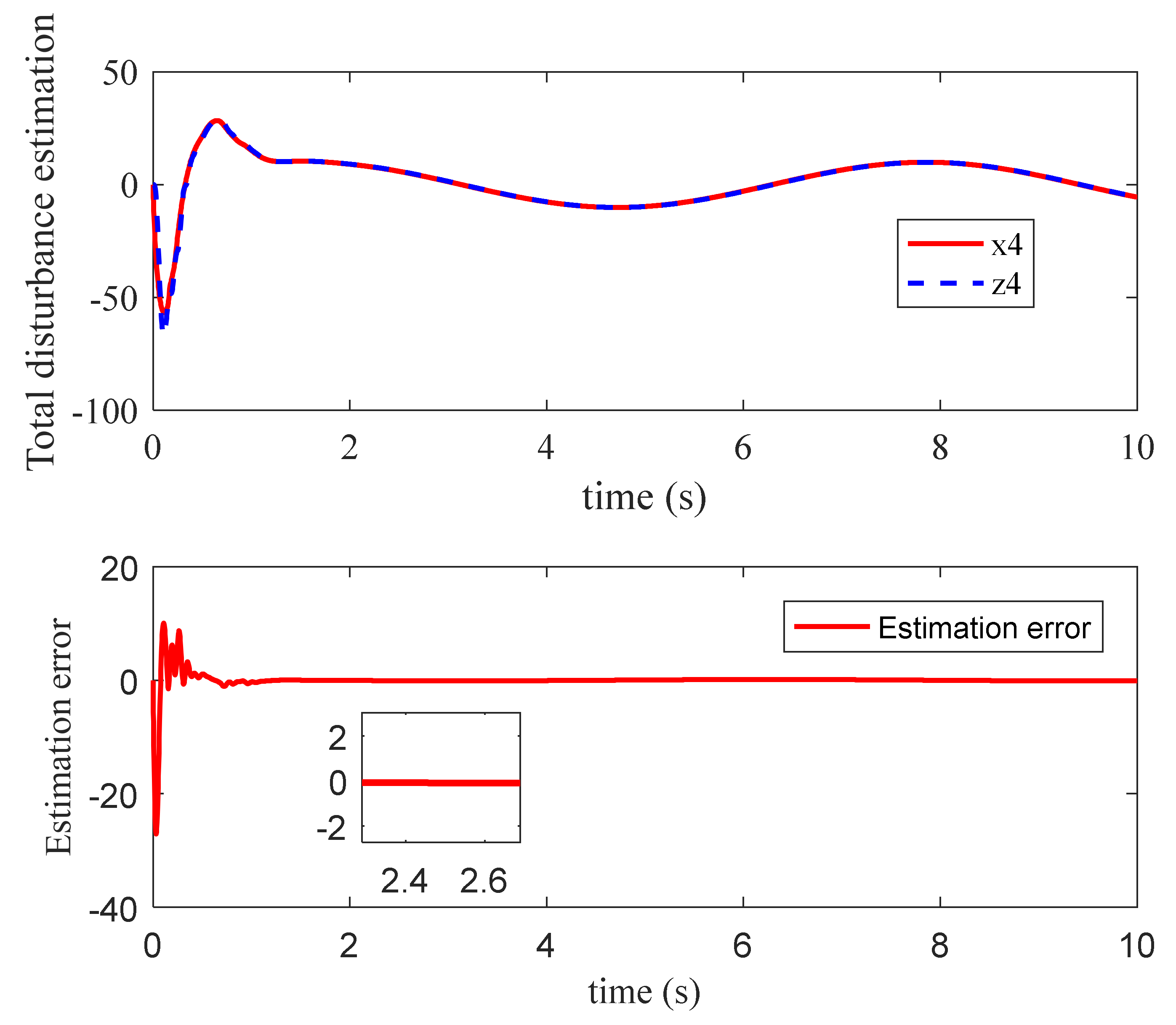
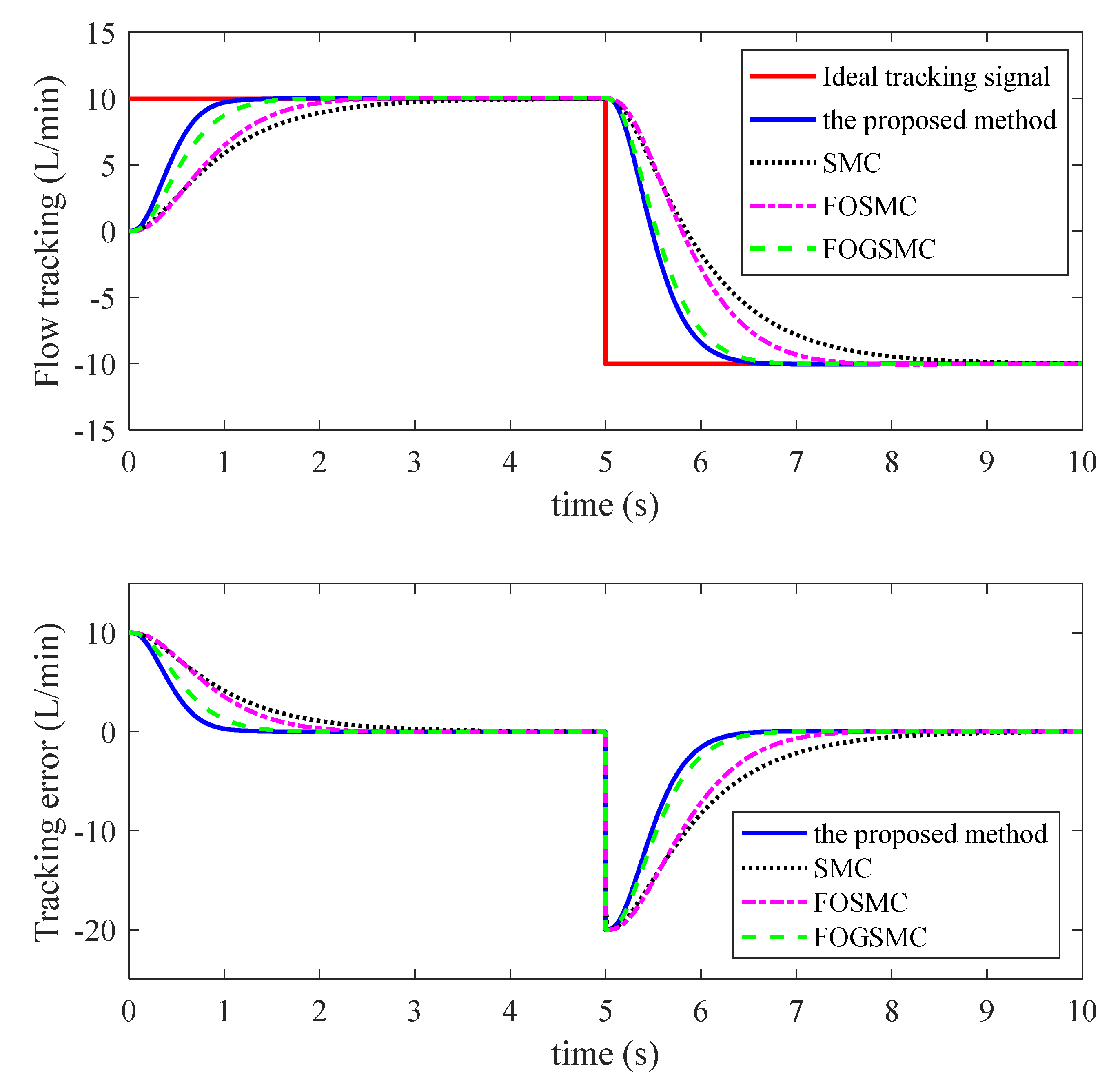


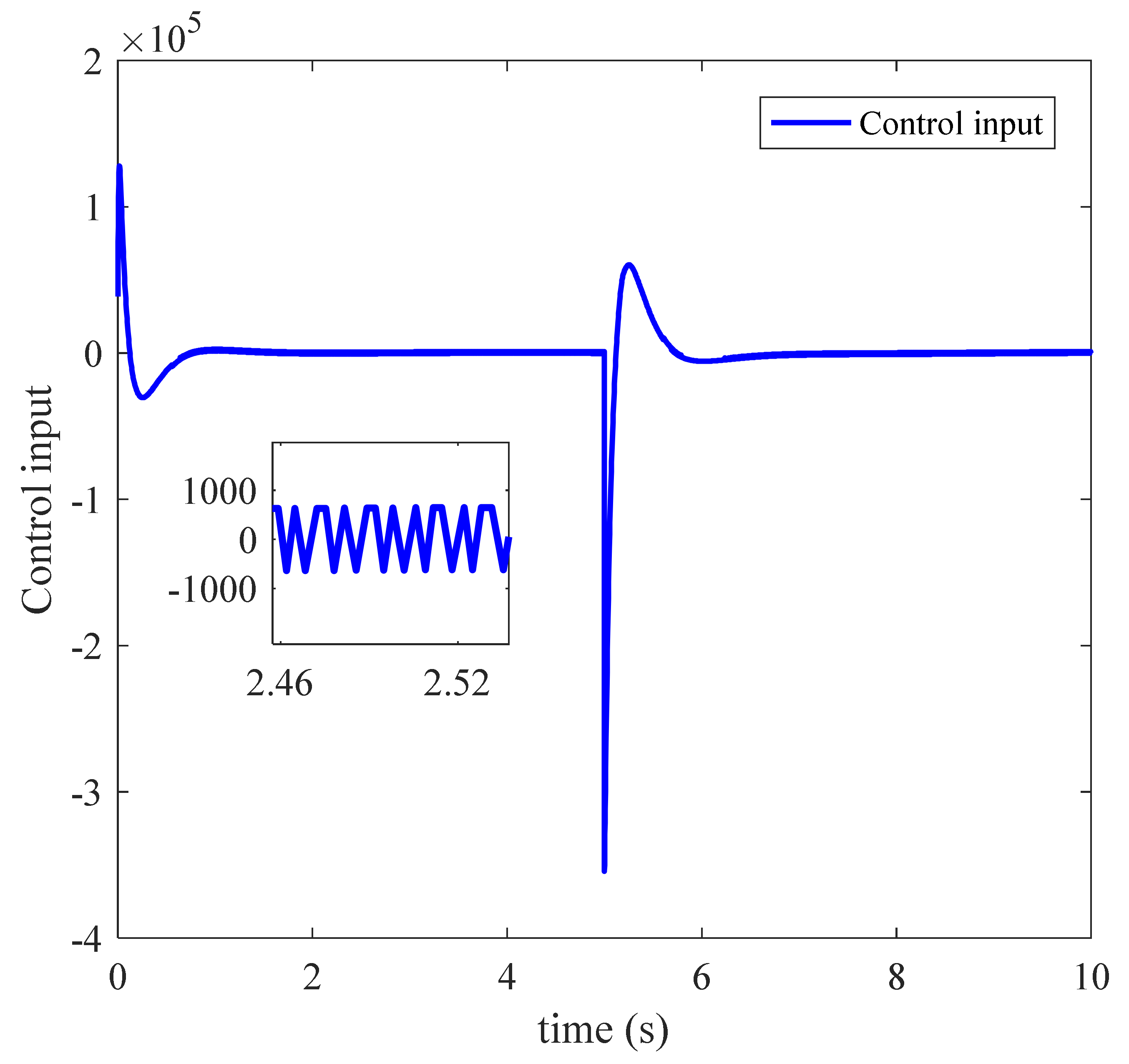
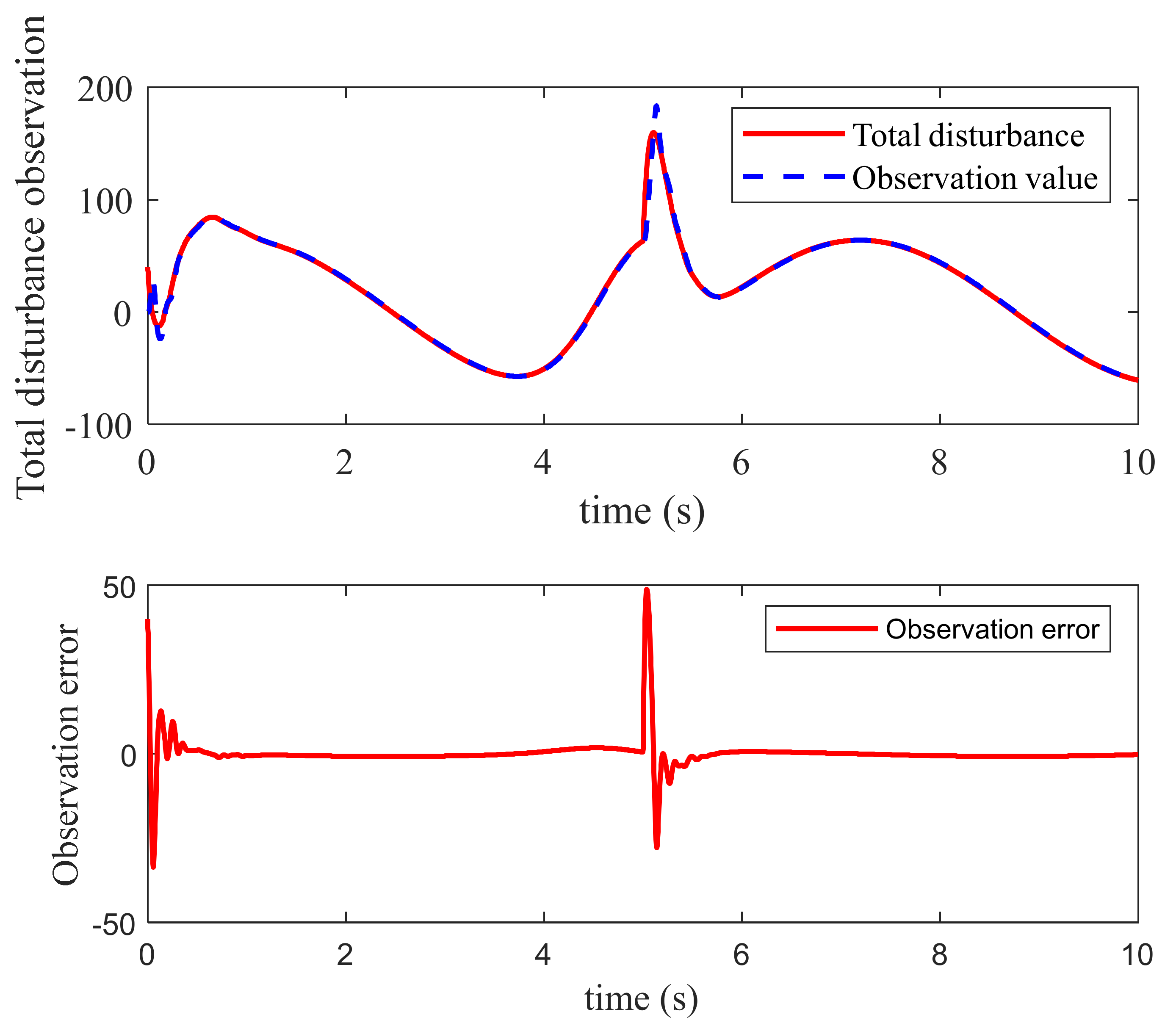


Publisher’s Note: MDPI stays neutral with regard to jurisdictional claims in published maps and institutional affiliations. |
© 2022 by the authors. Licensee MDPI, Basel, Switzerland. This article is an open access article distributed under the terms and conditions of the Creative Commons Attribution (CC BY) license (https://creativecommons.org/licenses/by/4.0/).
Share and Cite
Zhu, L.; Qi, X.; Wang, P. Adaptive Fuzzy Fractional Order Global Sliding Mode Tracking Control Algorithm for Particleboard Glue System. Processes 2022, 10, 719. https://doi.org/10.3390/pr10040719
Zhu L, Qi X, Wang P. Adaptive Fuzzy Fractional Order Global Sliding Mode Tracking Control Algorithm for Particleboard Glue System. Processes. 2022; 10(4):719. https://doi.org/10.3390/pr10040719
Chicago/Turabian StyleZhu, Liangkuan, Xing Qi, and Peiyu Wang. 2022. "Adaptive Fuzzy Fractional Order Global Sliding Mode Tracking Control Algorithm for Particleboard Glue System" Processes 10, no. 4: 719. https://doi.org/10.3390/pr10040719
APA StyleZhu, L., Qi, X., & Wang, P. (2022). Adaptive Fuzzy Fractional Order Global Sliding Mode Tracking Control Algorithm for Particleboard Glue System. Processes, 10(4), 719. https://doi.org/10.3390/pr10040719




